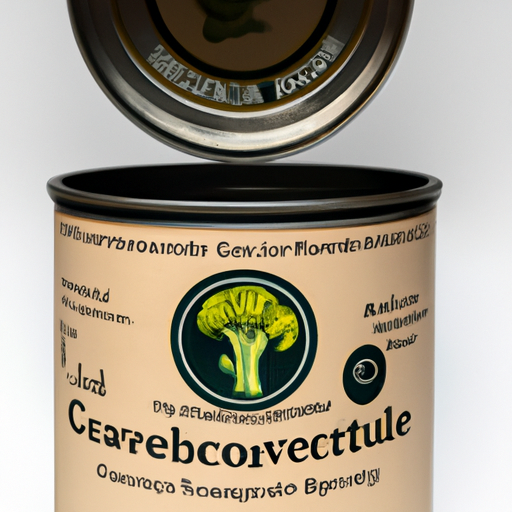Are you wondering if you can use a pressure canner at high altitudes and if any adjustments are needed? Look no further! Discover all the important details about using a pressure canner in high altitude areas and find out if any modifications are necessary. Stay tuned to find the answers to all your questions and ensure a successful canning experience at high altitudes.

Understanding Pressure Canning
What is pressure canning?
Pressure canning is a method of preserving food in which high temperatures are achieved by using a specialized pressure canner. This process involves sealing food in jars and heating them to a specific temperature under high pressure. The combination of heat and pressure kills bacteria, yeast, and molds that can cause spoilage, ensuring that the food remains safe to consume for an extended period.
Why use a pressure canner?
Pressure canning is essential for preserving low-acid foods, such as vegetables, meats, poultry, and seafood. These foods have a pH level higher than 4.6, which makes them susceptible to the growth of bacteria like Clostridium botulinum. By using a pressure canner, you can reach temperatures above the boiling point of water and eliminate the risk of bacterial growth, ensuring longer shelf life and safer consumption of your canned goods.
Benefits of pressure canning
Pressure canning offers several benefits that make it a popular method for preserving food. Firstly, it extends shelf life, allowing you to enjoy seasonal produce all year round. It also eliminates the need for refrigeration, as canned foods can be stored in a cool, dark place for an extended period. Additionally, pressure canning retains the nutritional value of the food, making it a healthier and more cost-effective alternative to commercially canned goods. By canning your own food, you have control over the ingredients and can customize flavors to your preference.
Effect of Altitude on Pressure Canning
How does altitude affect pressure canning?
Altitude plays a significant role in pressure canning because it affects atmospheric pressure. As altitude increases, atmospheric pressure decreases, which directly impacts the boiling point of water. At higher elevations, water boils at lower temperatures, making it challenging to achieve the necessary heat required for safe canning. This difference in boiling points necessitates adjustments in pressure and processing times to ensure the proper preservation of food.
Why are adjustments needed?
Adjustments are needed in pressure canning at high altitudes to compensate for the lower boiling point of water. Without these adjustments, the internal temperature required to kill harmful microorganisms may not be reached. Consequently, there is an increased risk of bacteria surviving the canning process, potentially leading to spoilage and foodborne illnesses. To achieve the same level of sterilization as at lower altitudes, it is important to modify pressure and processing times according to the specific altitude.
Understanding the impact of altitude on pressure canning
The impact of altitude on pressure canning cannot be underestimated. It directly affects the safety and quality of canned foods. For every 1,000 feet (305 meters) increase in altitude, the atmospheric pressure decreases by approximately 1 pound per square inch (psi). This reduction in pressure affects the boiling point of water, which drops by roughly 2°F (1°C) for each 1,000 feet (305 meters) gained in elevation. As a result, the temperature required for safe canning increases to compensate for the lower boiling point.
Pressure Canning Adjustments for High Altitudes
Determining if you are at a high altitude
Before making any adjustments, it is important to determine if you are at a high altitude. High altitude is generally considered to be 1,000 feet (305 meters) or more above sea level. You can easily find out your exact elevation by consulting topographic maps, using GPS devices, or checking online resources. Knowing your altitude is crucial for making the necessary adjustments in pressure canning to ensure the safety and quality of your preserved foods.
National guidelines for high altitude canning
To assist individuals living at high altitudes, national guidelines have been established to provide recommendations for pressure canning adjustments. Various countries, such as the United States, Canada, and Australia, have specific guidelines based on scientific research and extensive testing. These guidelines outline altitude-based adjustments for different types of canning recipes, including vegetables, meats, and fruits. It is essential to refer to these guidelines to determine the appropriate adjustments for your altitude and ensure safe and effective canning.
Understanding the adjustments required
The adjustments required in pressure canning for high altitudes primarily involve increasing the pressure and processing times. As altitude increases, the pressure in the canner needs to be raised to compensate for the reduced atmospheric pressure. The specific adjustments depend on your altitude and the type of food being canned. Generally, for each 1,000 feet (305 meters) increase in altitude, an additional 5 pounds per square inch (psi) of pressure may be needed. Similarly, the processing times may need to be extended to allow for the sufficient heat penetration required for safe canning.
Safety considerations for high altitude pressure canning
When canning at high altitudes, safety should be the top priority. It is important to follow the recommended adjustments and guidelines provided by reputable sources such as national extension services or reputable canning organizations. Failure to make the necessary adjustments may result in underprocessed food, which can lead to spoilage and the risk of foodborne illnesses. Additionally, ensure that your pressure canner is in good condition and properly calibrated to maintain accurate pressure readings throughout the process. Regular maintenance and testing of your canner are crucial for safe canning.
Recommended Pressure Canner Models
Selecting the right pressure canner
Choosing the right pressure canner is essential for successful high altitude canning. There are two main types of pressure canners: dial gauge canners and weighted gauge canners. Dial gauge canners measure pressure using a dial gauge, while weighted gauge canners use a weighted valve to regulate pressure. Both types of canners have their advantages and disadvantages, so it is important to consider your specific needs and preferences when selecting a pressure canner.
Features to consider
When selecting a pressure canner, there are a few key features to consider. First, the size and capacity of the canner should suit your canning needs. Smaller canners are suitable for those with moderate canning requirements, while larger canners are ideal for bulk canning or larger families. Additionally, consider the material of the canner. Stainless steel canners are durable and resist corrosion, while aluminum canners are lightweight but may be more prone to damage. Other features such as pressure release valves, locking mechanisms, and easy-to-read pressure indicators are also worth considering.
Top pressure canner models for high altitude canning
There are several reliable pressure canner models available on the market that are suitable for high altitude canning. The “All American” line of pressure canners is highly regarded for their durability and excellent heat distribution. The “Presto” line of pressure canners is another popular choice, offering adjustable pressure settings and reliable performance. It is recommended to read reviews, compare features, and consider your specific needs before making a final decision on which pressure canner to purchase.

Preparing for Pressure Canning at High Altitude
Gathering the necessary equipment
Before starting the pressure canning process, it is important to gather all the necessary equipment. Apart from the pressure canner itself, you will need canning jars, lids, bands, a jar lifter, a magnetic lid lifter, a canning funnel, a bubble remover, a headspace tool, and a good quality digital or analog kitchen timer. It is also important to have clean towels, a cutting board, a knife, and other general kitchen utensils readily available. Ensuring that you have all the required equipment on hand will make the canning process more efficient and enjoyable.
Ensuring the canner is in good condition
Before using your pressure canner, it is essential to inspect it for any signs of damage or wear. Check the sealing ring, pressure vent pipe, and pressure gauge (if applicable) for any cracks or defects. Ensure that the canner’s lid fits snugly and that there are no obstructions in the pressure release vent. Properly cleaning and maintaining your pressure canner will not only ensure safe canning but also prolong its lifespan.
Selecting appropriate canning recipes
When canning at high altitudes, it is important to select appropriate canning recipes that have been tested and recommended for your specific altitude. Recipes found in reputable canning books, online resources from agricultural extension services, or established canning organizations are usually reliable. Avoid altering recipes or substituting ingredients unless explicitly mentioned in trusted sources. Properly following recommended recipes will help ensure safe and successful pressure canning at high altitudes.
Pre-canning preparation steps
To prepare for pressure canning at high altitudes, there are a few important steps to follow. Begin by washing and sanitizing your canning jars, lids, and bands. Inspect each jar for any chips or cracks that could affect their sealing ability. Prepare your canning area by ensuring it is clean and organized. Wash and chop the fruits or vegetables you will be canning, taking care to remove any bruised or damaged portions. Having all the ingredients prepped and ready before starting the canning process will save time and make the overall experience more enjoyable.
Understanding the canning process at high altitudes
Canning at high altitudes follows a similar process to canning at lower altitudes, with the main difference being the adjustments required to achieve the necessary heat penetration. It is important to follow the recommended procedure for your specific canning recipe, including the proper packing of jars, leaving appropriate headspace, and using the correct processing times and pressure levels for your altitude. By adhering to the guidelines and making the necessary adjustments, you can effectively preserve your food and ensure its safety and quality.
Making Adjustments to Pressure Canning Procedures
Adjusting processing times
One of the key adjustments that need to be made in pressure canning at high altitudes is the extension of processing times. The exact extension of processing times depends on your specific altitude and the type of food being canned. Generally, for every 1,000 feet (305 meters) increase in altitude, it is recommended to add an additional 5 minutes to the processing time. This extension allows for the sufficient heat penetration required to achieve safe canning.
Modifying pressure levels
In addition to adjusting processing times, it is necessary to modify the pressure levels when canning at high altitudes. As mentioned earlier, for every 1,000 feet (305 meters) increase in altitude, an extra 5 pounds per square inch (psi) of pressure may be required. This adjustment compensates for the lower atmospheric pressure, ensuring that the internal temperature reaches the necessary level for safe canning. The specific pressure adjustment will depend on your altitude, so it is crucial to consult reliable guidelines or extension service recommendations.
Determining the correct adjustments for your altitude
To determine the correct adjustments for your altitude, refer to reputable guidelines specific to your country or region. These guidelines typically provide altitude charts that outline the required adjustments for both processing times and pressure levels. Locate your specific altitude on the chart and follow the corresponding recommendations for adjusting the processing time and pressure. It is important to note that not all guidelines may provide the same adjustments, so always use the ones applicable to your region.
Using altitude charts and guidelines
Altitude charts and guidelines are valuable resources for pressure canning at high altitudes. They provide specific adjustments to compensate for the lower boiling point of water, allowing for safe and successful canning. These charts are usually based on scientific research and extensive testing, providing reliable information for canning enthusiasts. By utilizing altitude charts and guidelines, you can confidently adjust your processing times and pressure levels, ensuring the proper preservation of your canned foods.

Testing the Accuracy of Your Pressure Canner
Why accuracy is important
Ensuring the accuracy of your pressure canner is crucial for safe and effective canning. If the pressure readings on your canner are not accurate, it may lead to underprocessing or overprocessing of the food, increasing the risk of spoilage or foodborne illnesses. To achieve the desired results and maintain the quality of your canned goods, it is important to regularly test the accuracy of your pressure canner.
How to test the accuracy of your pressure canner
Testing the accuracy of your pressure canner can be done using a method called the weighted gauge test. This test involves measuring the temperature at which your canner’s weighted gauge jiggles or rocks during normal operation. By comparing this temperature to the known standard, typically indicated in the canner’s instruction manual, you can determine if your canner is operating accurately. If your canner shows a significant deviation from the standard, adjustments or repairs may be necessary to ensure accurate pressure readings.
Steps to ensure correct pressure readings
To ensure correct pressure readings, there are a few steps you can take. Before each use, carefully inspect your canner’s pressure gauge or weighted gauge for any defects or damage. Clean the gauge and ensure that it moves freely. Follow the manufacturer’s instructions for operating and maintaining the gauge, as different canner models may have specific requirements. If you suspect that your canner’s gauge is not working correctly, perform regular tests using the weighted gauge test method to verify its accuracy. Additionally, have your canner serviced or calibrated by a professional if you notice consistent inaccuracies or abnormalities in pressure readings.
Ensuring Safe Canning Results
Checking for proper sealing
After the canning process is complete, it is important to check each jar for proper sealing. A sealed jar indicates that a vacuum has formed, preventing bacteria and air from entering the jar, thus ensuring the safety and quality of the canned food. To check for proper sealing, gently press the center of the lid. If the lid does not pop back, it is properly sealed. Alternatively, you can remove the band and gently lift the jar by the edges of the lid. If the lid stays in place, the jar is sealed. Any unsealed jars should be refrigerated and consumed promptly or reprocessed using appropriate canning methods.
Storage recommendations
Proper storage is essential for maintaining the quality and safety of your canned goods. Store your sealed jars in a cool, dark place that is free from extreme temperature fluctuations. A pantry or root cellar is ideal, as long as the temperature remains relatively consistent. Avoid storing jars in direct sunlight or near sources of heat, as this can affect the quality of the food and may lead to spoilage. It is also important to label each jar with the contents and date of canning for easy identification and rotation.
Monitoring for signs of spoilage
Despite following proper canning procedures, it is important to remain vigilant for signs of spoilage in your canned goods. Unsealed jars, leakage, off-putting odors, mold growth, unnatural discoloration, or bulging lids are all indications that the food inside may be contaminated or spoiled. If you notice any of these signs, discard the contents of the jar immediately. It is better to err on the side of caution and prioritize your health and safety.
Understanding potential risks and precautions
While pressure canning is generally a safe and effective method of preserving food, it is essential to be aware of potential risks and take necessary precautions. Failure to adjust for high altitude, using inadequate canning equipment, or ignoring safety guidelines can increase the risk of underprocessing, contamination, and spoilage. To minimize these risks, always follow reputable guidelines and recipes, regularly test your pressure canner for accuracy, use appropriate canning procedures, and carefully monitor your canned goods for any signs of spoilage or contamination.

Common Mistakes to Avoid
Overprocessing or underprocessing
One common mistake in pressure canning is overprocessing or underprocessing the food. Overprocessing can result in the loss of texture, flavor, and nutrients, while underprocessing can lead to bacterial growth and spoilage. It is crucial to accurately adjust processing times and pressure levels according to your altitude and the type of food being canned. Following the recommended guidelines and testing the accuracy of your canner will help you avoid these common mistakes.
Lack of proper altitude adjustments
Failing to make the necessary adjustments for high altitude canning is another common mistake. The reduced atmospheric pressure at high altitudes requires increased pressure and processing times to achieve the necessary sterilization. Ignoring these adjustments can result in unsafe canning conditions and compromised food safety. Always consult trustworthy sources and adhere to the altitude-based guidelines for safe and successful pressure canning.
Ignoring safety guidelines
Disregarding safety guidelines is a critical mistake when pressure canning. It is important to follow the recommended procedures, including proper packing of jars, leaving appropriate headspace, and using tested recipes. Taking shortcuts or improvising can jeopardize food safety, increasing the risk of bacterial contamination and spoilage. Prioritize your health and the quality of your canned goods by adhering to established safety guidelines.
Using inadequate canning equipment
Using inadequate or faulty canning equipment is a dangerous mistake in pressure canning. A damaged or improperly calibrated pressure canner may not achieve the necessary pressure and temperature to safely preserve food. It is essential to invest in a reliable pressure canner that is suitable for high altitude canning. Regularly inspect and maintain your canner, follow proper usage instructions, and test for accuracy to ensure safe and effective canning.
Failure to test pressure canner accuracy
Neglecting to test the accuracy of your pressure canner is a commonly overlooked mistake. Over time, a canner’s gauge or valve may become inaccurate and provide unreliable pressure readings. Testing the accuracy of your canner using the weighted gauge test will help you avoid underprocessing or overprocessing your food. Regularly check and calibrate your canner to ensure consistent and accurate pressure readings throughout the canning process.
Conclusion
Pressure canning at high altitudes requires a thorough understanding of the adjustments and considerations specific to your altitude. By following recommended guidelines and making the necessary adjustments to processing times and pressure levels, you can safely preserve your food and enjoy the benefits of pressure canning. The importance of accuracy, proper sealing, storage, and monitoring cannot be overstated in maintaining the safety and quality of your canned goods. With the right equipment, knowledge, and adherence to safety guidelines, you can confidently engage in pressure canning and reap the rewards of delicious and preserved foods.

